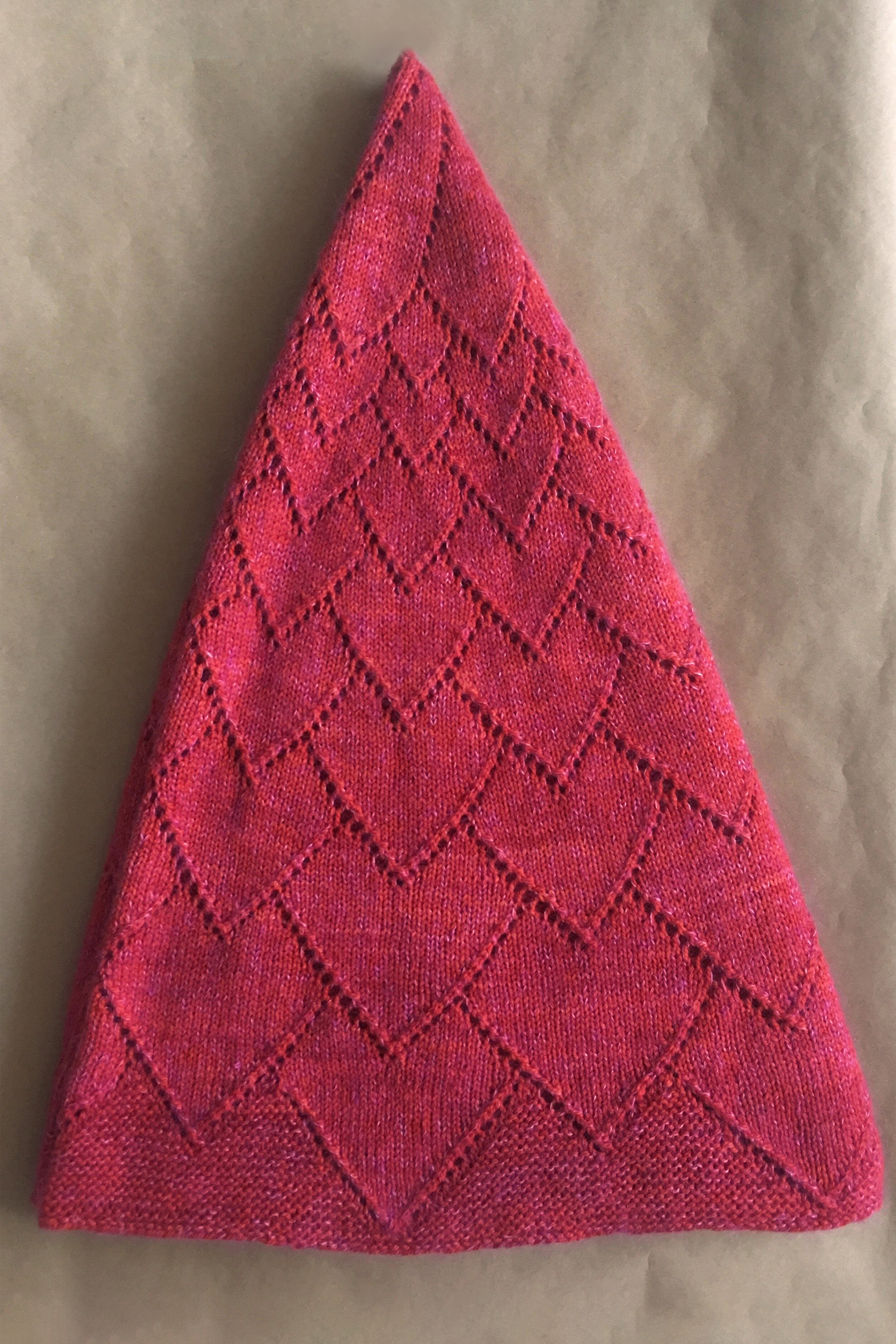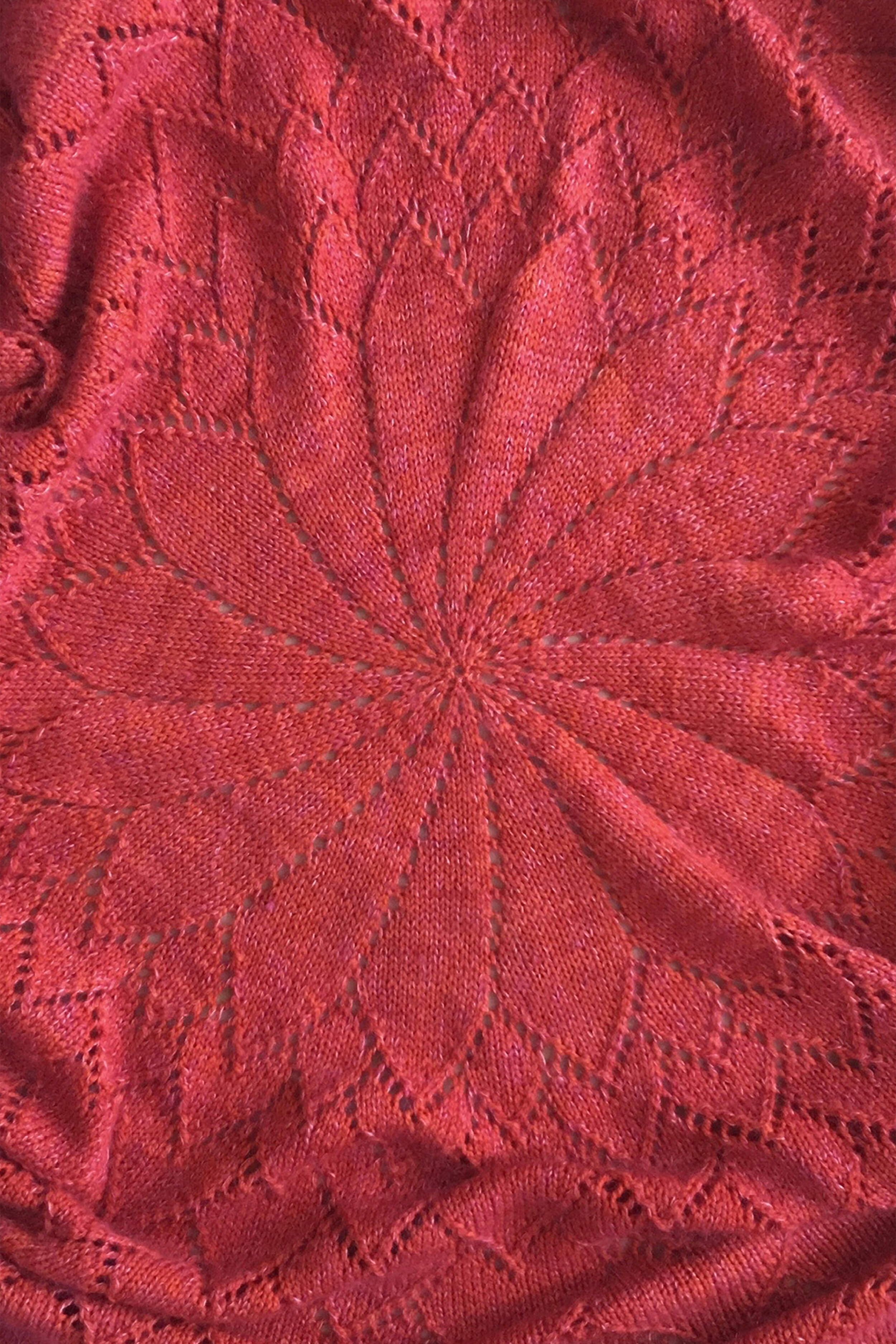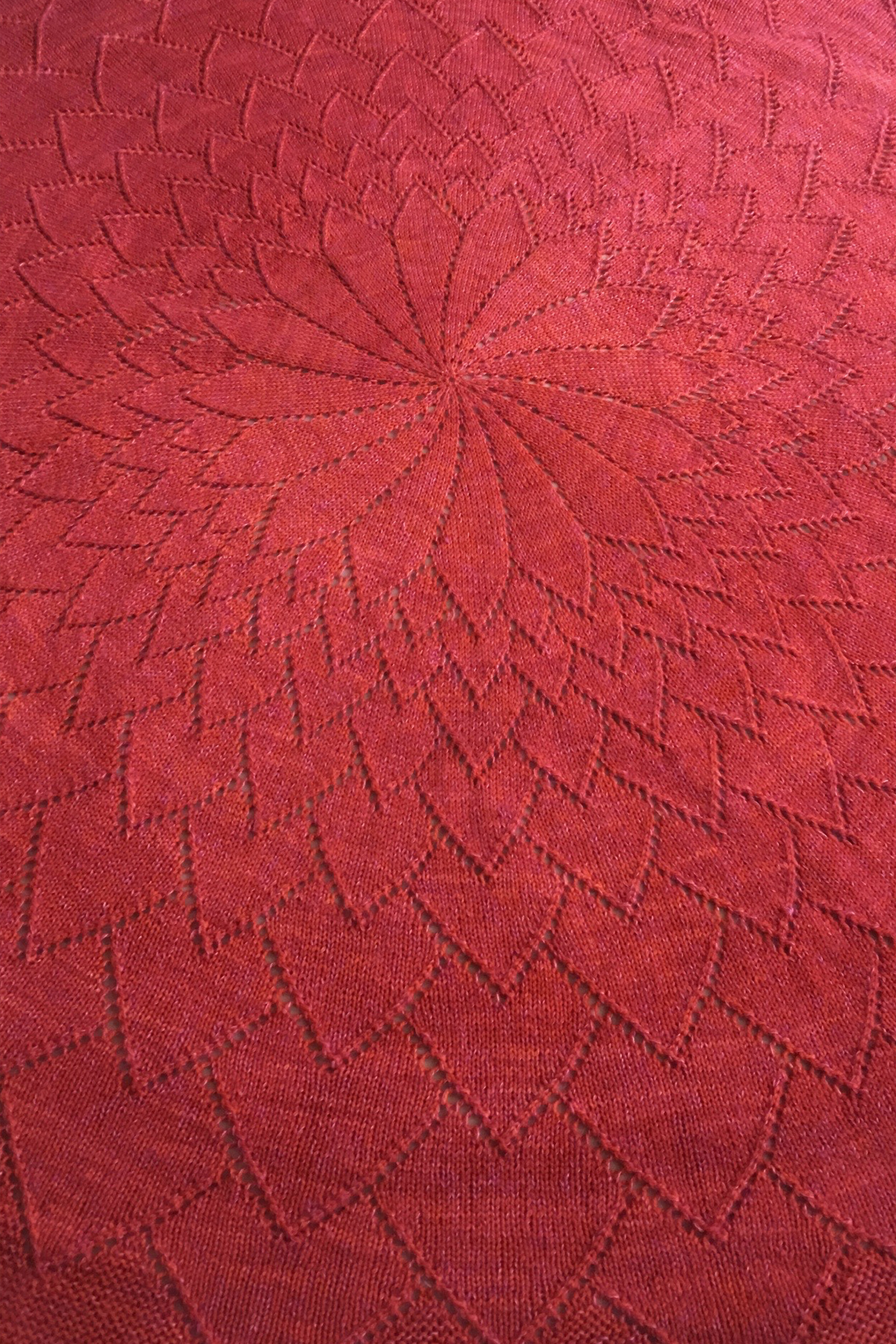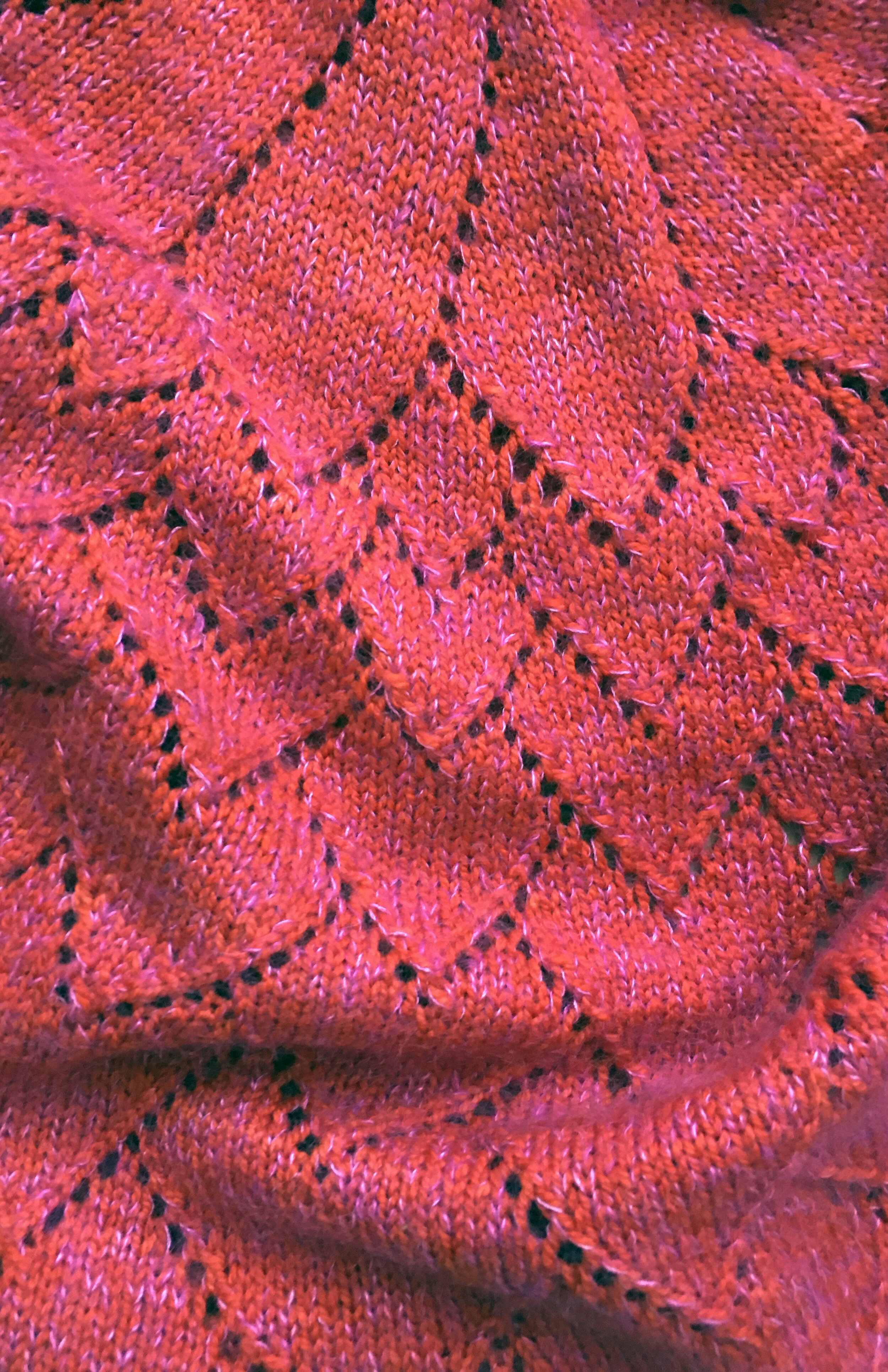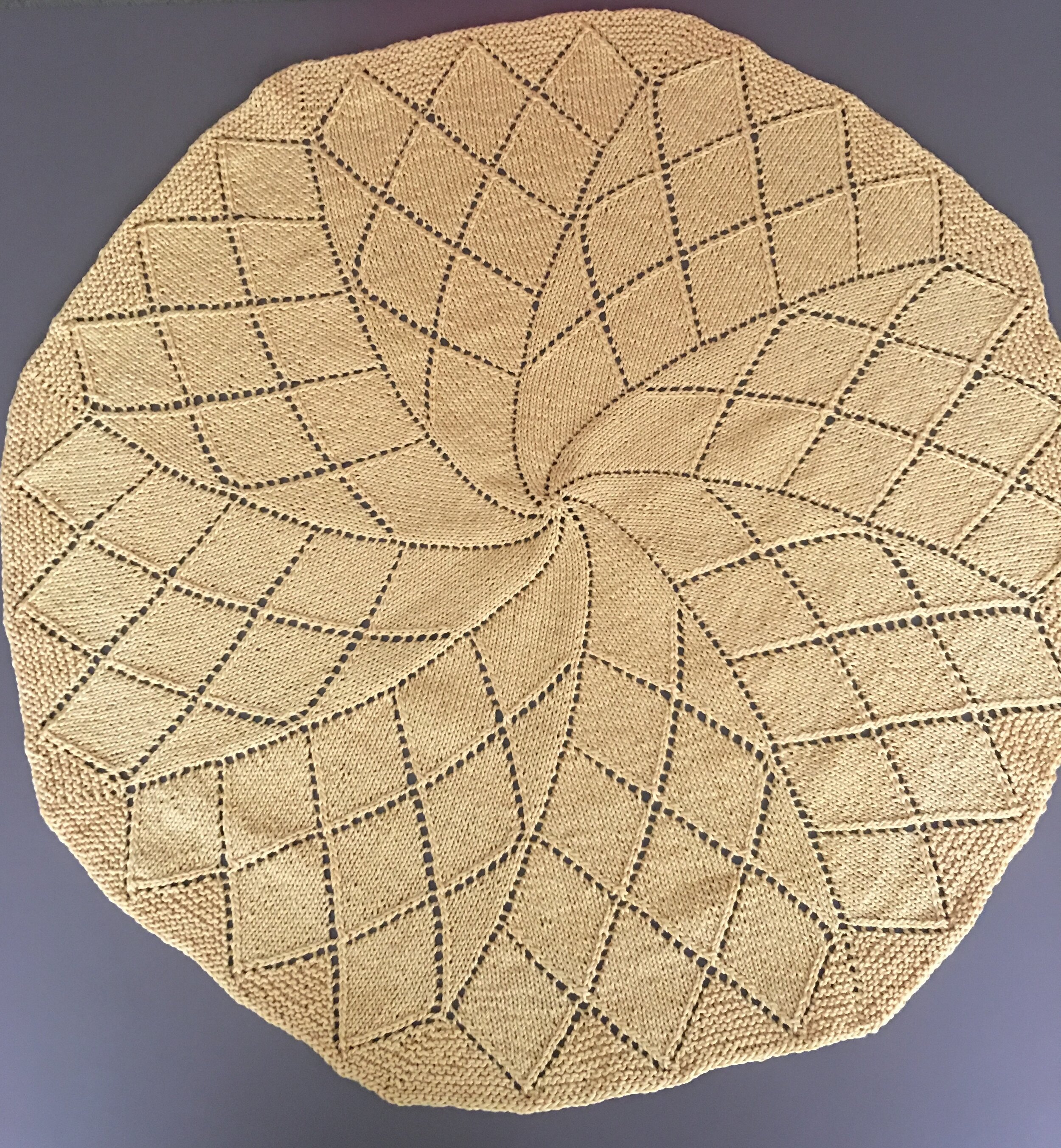DAHLIA BLANKET
No person has had a more profound influence on my knitting life than Barbara Walker. When I was first fortunate to meet her 15 years ago at her home in Nokomis, Florida, I remember sitting with her in a back bedroom and looking at items she had made over the years, some of the most intricate and imaginative pieces of knitting I had ever seen. A favorite of mine was an orange queen-sized blanket comprised of all of the cable stitch patterns she had invented and that I had long admired from her Third Treasury of Knitting Patterns.
I was a bit overwhelmed in those first moments. Barbara has a way of shrugging her shoulders at praise, blinking her eyes slowly in a way that suggests all of her genius is simply par for the course and no big deal. But for me, and in that moment, it was all a very big deal.
I remember one of the last pieces she showed me during that initial visit was a cotton tablecloth with a floral motif in bright pink, with extraordinary petals emanating from the center. It took my breath away. This was all before instant access to camera phones and I remember thinking that for the rest my life I would try to remember that moment as one of the most special. “Take this in,” I remember telling myself.
When I was able to visit her last July, I asked her a bit more about her work developing center out construction. I had used (and enjoyed designing with) her top-down hat template which begins with the same basic steps, but I had never tried making a blanket this way. She gathered a series of tablecloths she had made from the center out to show me and encouraged me to give it a try.
One of the ingenious tablecloths Barbara showed me.
I asked about the pink tablecloth she had shown me years earlier, and she told me that it had been part of an auction she had coordinated with Meg Swansen and Schoolhouse Press and that she no longer had it.
When I got back home and started to write down a wish list of the items I wanted create for this site, my thoughts returned again and again to the idea of something floral, created from the center out, and specifically a blanket that could match the wonder of Barbara’s tablecloth. I began an endless process of experimenting and charting, swatch after swatch after swatch trying to get it right. I found that the initial steps for creating center-out blankets, which begin with 8 stitches on 3 double pointed needles can be a bit fiddly, but that an enjoyable rhythm quickly develops that makes things easier. I’ve included both written instructions and a chart in the pattern.
Wanting to choose a brilliant color, I thought of my mother’s dahlias and their vibrant red with a whisper of purple at the outer edges, and my search led me to the most perfect, dreamlike combination of yarn at Purl Soho, combining their happy chili pepper red Posy yarn with a strand of Tussock, a super fine kid mohair blend in Bright Thistle: Yowsa!
A bit overwhelmed by excitement when I was done, I sent an image to Barbara and immediately wrote Meg to also share the story with her and to ask if she had any record of who had purchased the piece I remembered. Her response a few hours later lifted my heart, she wrote:
What a treat to hear from you, dear Kristy.
As fate would have it, I know exactly who bought that splendid pink cotton tablecloth: ME!
I am thrilled to be able to share this very special pattern with you now, and hope that its petals envelop you with the same sense of warmth and love that went into creating it.
The glorious orange cabled blanket that I struggled to not cram into my suitcase during a visit in 2014.
MATERIALS YOU WILL NEED
Yarn A: 6 skeins of Purl Soho’s Tussock, 60% super fine kid mohair and 40% silk in Bright Thistle. Each skein is approximately 328 yards (300 meters); approximately 1785 total yards (1635 total meters) required.
Yarn B: 7 skeins of Purl Soho’s Posy, 75% superwash merino, 15% cashmere, and 10% nylon in Chili Pepper. Each skein is approximately 318 yards (291 meters); approximately 1975 total yards (1805 total meters) required.
A set of US 7 double pointed needles
US 7, 24 or 32-inch circular needle
16 stitch markers, including 1 in a unique color
GAUGE
16 stitches and 26 rows = 4 inches in stockinette stitch, using 1 strand each of A and B held together, relaxed after blocking
SIZE
Finished Dimensions: 60” diameter circle

